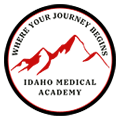Medical Emergencies are ruthless. They strike without warning and often when we least expect. While this is certainly unsettling, there are many steps we can take to make our schools and workplaces safer. Let’s break down the top ways to be prepared for a medical crisis at work or school!
1. Invest in CPR Training
One of the best things that can be done to prepare for the worst is to get your staff CPR certified. This will prepare them for the rare but inevitable day when someone needs to be resuscitated. Many businesses provide this as a part of employee training and do it periodically. Most often, medical schools will travel to the workplace to conduct the CPR training and will teach the entire staff at once.
2. Add First Aid Training
While CPR is extremely important, it’s just the tip of the iceberg. First aid training is also essential to being ready for emergencies. This will provide them with the skills needed to stop bleeding, treat burns, set a broken bone and much more. After this training, the workplace or classroom will be far safer now that the staff are prepared to handle a variety of medical scenarios.
3. Display Emergency Contact Information
Though important, even the best civilian training can’t compare to getting help from first responders. Certified professionals should always be contacted immediately. One way to speed up the rescue is to provide an easily visible list of emergency contact numbers. This makes it far easier to call EMS, fire, police, or poison control. Employers should also collect contact information for loved ones of each worker, so they can be notified during a crisis.
4. Buy an AED
First responders may be superheroes, but they don’t have super speed. Sometimes the situation is so dire it needs to be addressed immediately. This is where an AED comes it. These lightweight, portable devices deliver that famous shock that resets an out of control, arrhythmic heart. Despite their seemingly dangerous nature, AEDs are simple to use. The machine includes voice instructions to talk you through the entire process. They can be found in most public locations and are a fantastic investment in the safety of your students or staff.
5. Add a First Aid Kit
Along with your AED, having an all purpose first aid kit is non-negotiable. Band-aids, gauze, medical tape, tweezers and painkiller among many other items are the foundation of most first aid procedures and need to be easily accessible. Kits can be purchased over a wide range of sizes, depending on the number of people to be prepared for. Also be sure to include them in company vehicles to be ready for roadside emergencies.
6. Be Allergy Friendly
Food Allergies are a challenge for millions of people and steps should be taken to ensure they aren’t at risk at work or school. In severe cases, the victim goes into a state of Anaphylaxis, which can be lethal. Be sure to establish who has allergies and collaborate with everyone to create a safe environment for them. Great ways to do this are labeling food, storing allergy prone food separately and choosing catering options that accommodate for allergies. Lastly, training the group on how to use an EpiPen will provide an extra layer of safety.
7. Follow Safety Guidelines
Another great way to keep your workplace safe (and out of legal trouble) is to stay updated on all legal and federal safety guidelines. They may seem tedious, but they exist for a reason. Different rules exist for different environments, but all should be approached with the same level of respect. OSHA is the most prominent agency in charge of this and businesses are required to display posters with worker’s rights regarding safety.
8. Hold Safety Meetings
Safety guidelines are totally useless unless everyone is aware of them. Having periodic safety meetings will ensure people are ready to spring into action if needed. This is where previous tips can be discussed such as food allergies, the first kit or AED, and location of emergency contacts. It’s also a fantastic idea to designate roles for emergencies. Tyler could be the CPR guy while Hannah is in charge of calling 911. Just be sure anyone and everyone is ready to step in if those people aren’t around.
These are just a few of an endless list of things you can do to create a safer environment for staff and students. Because medical emergencies can happen to any of us, planning and prevention are worthy to invest in. For more information on preparing for emergencies, you should look into Idaho Medical Academy. We are happy to help make your school or business safer through high quality CPR and first aid training! Travelling and group classes are available if needed. Give us a call today!








